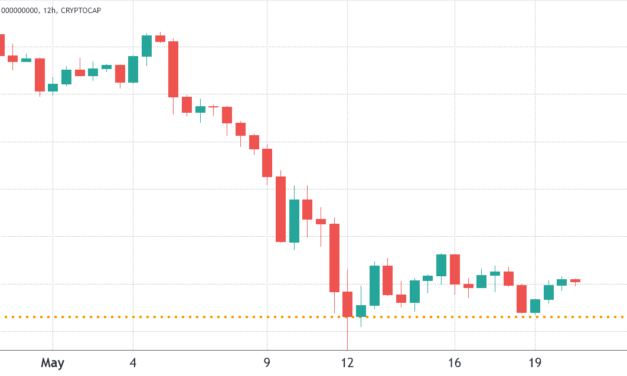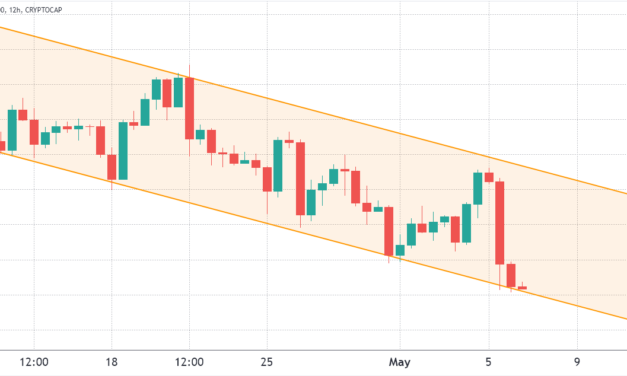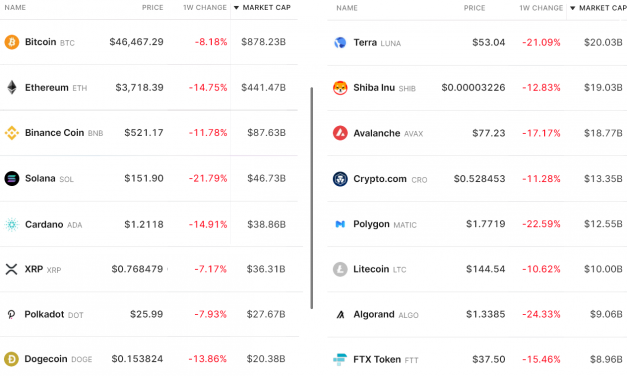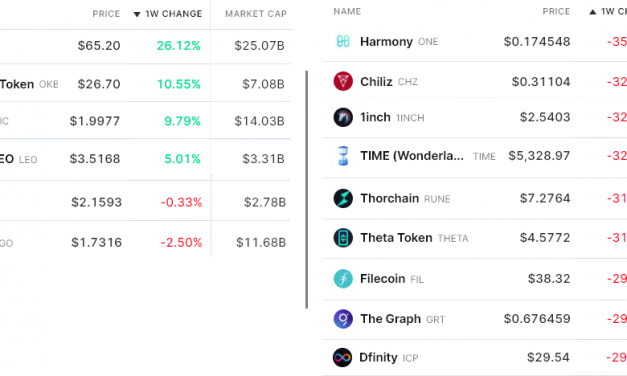Altcoin prices briefly rebounded, but derivatives metrics predict worsening conditions
On May 12, the total crypto market capitalization reached its lowest close in 10 months and the metric continues to test the $1.23 trillion support level. However, the following seven days were reasonably calm while Bitcoin (BTC) gained 3.4% and Ether (ETH) added a modest 1.5%. Presently, the aggregate crypto cap stands at $1.31 trillion.Total crypto market cap, USD billion. Source: TradingViewRipples from Terra’s (LUNA) collapse continue to impact crypto markets, especially the decentralized finance industry. Moreover, the recent decline in traditional markets has led to a loss of $7.6 trillion in market cap from the Nasdaq Stock Market Index, which is higher than the dot-com bubble and the March 2020 sell-offs.On May 17, U.S. Federal Reserve Chairman Jerome Powell confirmed their intention to suppress inflation by raising interest rates but he cautioned that the Fed’s tightening movement could impact the unemployment rate.The bearish sentiment spilled to crypto markets and the “Fear and Greed Index,” a data-driven sentiment gauge, hit 8/100 on May 17. This is the metric’s lowest value since March 28, 2020, two weeks after the generalized crash that sent oil futures to negative levels and brought Bitcoin (BTC) below $4,000.Below are the winners and losers from the past seven days. While the two leading cryptocurrencies presented modest gains, a handful of mid-capitalization altcoins rallied 15% or higher.Weekly winners and losers among the top 80 coins. Source: NomicsMonero (XMR) rallied 22% as investors awaited the “tail emission” to be implemented at block 2,641,623 or sometime around June 4. The community decided to include a 0.6 XMR minimum reward in every block, so miners are not 100% reliant on transaction fees.Cosmos (ATOM) gained 16.5%, a movement that seems a part of a broader retracement that started on May 12 when ATOM fell to its eleven-month low near $8. It is worth noting that its parent chain, Cosmos Hub, witnessed massive capital outflows from its liquidity pools, according to reporting from Cointelegraph.Klaytn (KLAY), a blockchain-backed by South Korean internet giant Kakao, announced on May 16 that it would provide infrastructure, and initial nodes, and develop early use cases for the Blockchain-based Service Network (BSN), providing an entry into the Chinese marketThe Tether premium shows slight discomfortThe OKX Tether (USDT) premium is a good gauge of China-based retail trader crypto demand. It measures the difference between China-based peer-to-peer (P2P) trades and the United States dollar.Excessive buying demand tends to pressure the indicator above fair value at 100% and during bearish markets, Tether’s market offer is flooded and causes a 4% or higher discount.Tether (USDT) peer-to-peer vs. USD/CNY. Source: OKXThe Tether premium peaked at 5.4% on May 12, its highest level in more than six months, but the movement could have been related to the Terra ecosystem’s massive outflows, which were mainly the USD Terra (UST) stablecoin.More recently, the indicator showed a modest deterioration as it currently holds a 1.8% discount. The lack of retail demand is not especially concerning because the total cryptocurrency market capitalization lost 34% in the past month.Altcoin futures reflect disinterest in leveragePerpetual contracts, also known as inverse swaps, have an embedded rate that is usually charged every eight hours. Exchanges use this fee to avoid exchange risk imbalances.A positive funding rate indicates that longs (buyers) demand more leverage. However, the opposite situation occurs when shorts (sellers) require additional leverage, causing the funding rate to turn negative.Accumulated perpetual futures funding rate on May 20. Source: CoinglassPerpetual contracts are reflecting mixed sentiment as Bitcoin and Ethereum hold a slightly positive (bullish) funding rate, but altcoins signal the opposite. For example, Solana’s (SOL) negative 0.35% weekly rate equals 1.5% per month, which is not a concern for most derivatives traders.Considering that derivatives indicators are showing little improvement, there’s a lack of trust from investors as the total crypto market capitalization battles to keep the $1.23 trillion support. Until this sentiment improves, the odds of an adverse price movement remain high.The views and opinions expressed here are solely those of the author and do not necessarily reflect the views of Cointelegraph. Every investment and trading move involves risk. You should conduct your own research when making a decision.
Čítaj viac







